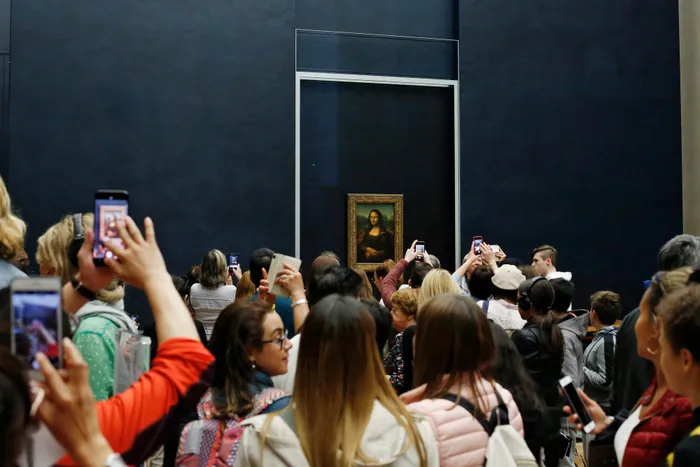Museums rethink art shows to cut climate impact

Tourists wait to see Leonardo da Vinci's painting Mona Lisa, at the Louvre museum, in Paris. Picture: AP
By Joanna Gill
When coronavirus forced some of the France's busiest museums to close their doors in 2020, it was a rare chance for reflection.
Curators' conversations during lockdowns centred on the question: "What kind of world do we want to live in post-pandemic?", said Julie Narbey, the director of the Centre Pompidou in Paris, which houses Europe's largest modern art collection.
Narbey said her team concluded over video calls that the pandemic was the "moment to step up a gear on the environment".
"It's in our DNA to tackle the big questions of the modern world," she told the Thomson Reuters Foundation.
This prompted a rethink of how to cut the carbon footprint of exhibitions – from recycling staging and extending the length of major shows to scaling back on overseas loans of artworks.
Such measures appear to be a win-win for museums as they not only slash emissions but can reduce costs.
That is crucial for a part of the economy hit hard by coronavirus restrictions, according to the International Council of Museums. It can also help museums avoid growing criticism for accepting sponsorship exhibits from fossil fuel companies.
The art world has been lagging behind other industries when it comes to addressing greenhouse gas emissions, said Sarah Sutton, head of Environment and Culture Partners, a US non-profit NGO advising cultural bodies on sustainability.
"Fortunately, the sector is finally recognising that it is late to the party, which means we're finally seeing great interest in these changes," she said.
Several initiatives have been launched in the past few years- in Europe and the US – from carbon calculators to consultations and audits of galleries' efforts to go greener.
"For me, it's not a question how long will it take but how quickly can we accelerate it," said Sutton.

While she said she was "hugely optimistic", she stressed that more must be done to raise awareness among funders and donors of art museums' work to become more sustainable.
There had long been an assumption that museums' climate impacts were too small to warrant change, or art directors equate climate with politics and fear that might hurt funding, she said.
HOME IS WHERE THE ART IS
Paris is home to three of the world's most-visited art museums: the Louvre, Musee d'Orsay and Centre Pompidou.
In a normal year they welcome millions of visitors, mostly from overseas, producing a substantial carbon footprint.
While there is little museums can do to reduce air travel by tourists, they can cut back on the flights a Warhol or Picasso makes, said Guergana Guintcheva, a professor of marketing at Lille's EDHEC Business School who has carried out research on museums.
One of the main sources of exhibition carbon emissions comes from transporting artworks from collections across the world, according to the Galleries Climate Coalition (GCC), a global charity providing sustainable guidelines for the art sector.
"For every artwork, there is round-trip air travel - and at least two round-trip journeys for a curator," said Guintcheva.
She cited Lille's Palais des Beaux Arts as having taken a climate-conscious approach with its recent Goya exhibition.
By prioritising works in its permanent collection and pieces located in neighbouring European countries, the museum cut down on freight transport for the art it displayed.
The Centre Pompidou is also focusing on sourcing local artworks rather than taking loans from the United States or Asia.
Some museums are also making exhibitions greener by pooling resources.
Narbey, of the Centre Pompidou, said shipping requests could be shared with the Louvre or Musee d'Orsay for transport from the same locations, such as New York, cutting emissions and costs.
Last month, the GCC launched its 'Sustainable Shipping Campaign' calling for an overall reduction in air freight by 2028, and local deliveries to be low or zero emissions by 2025.